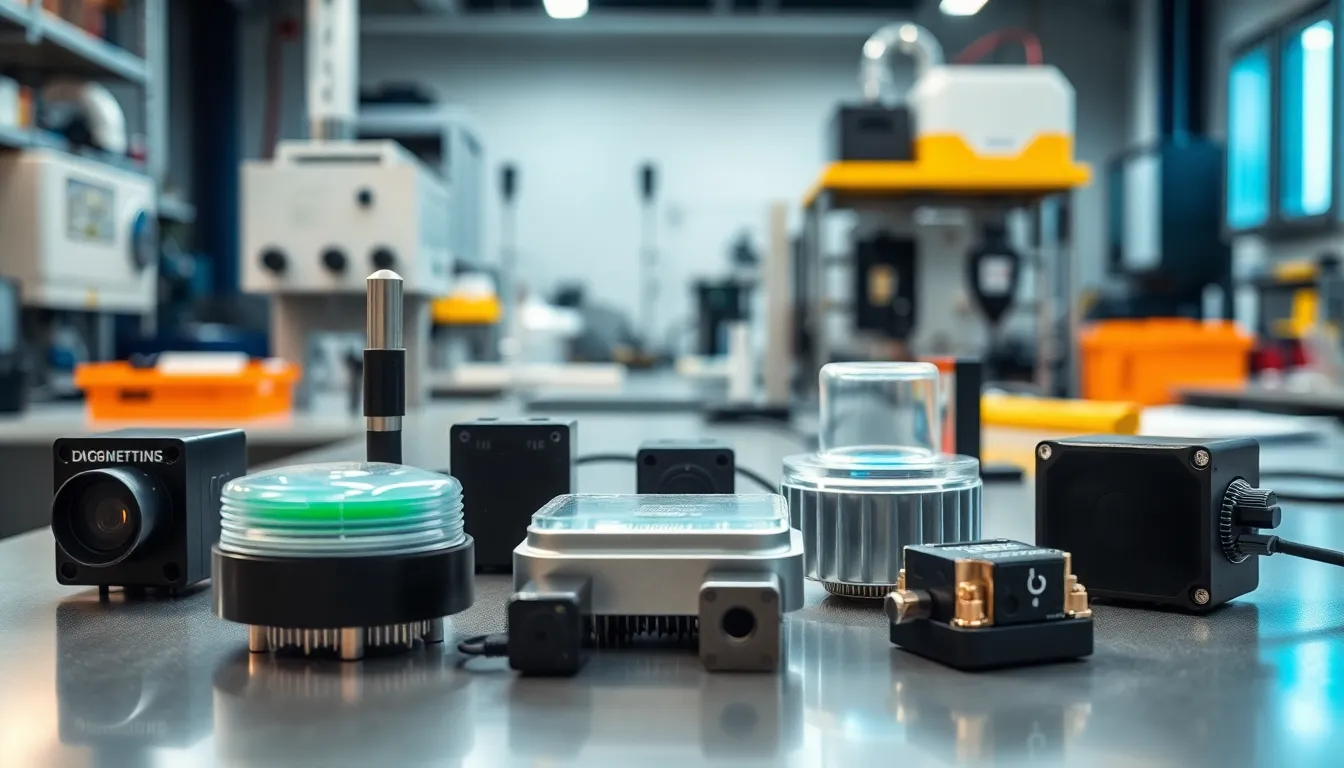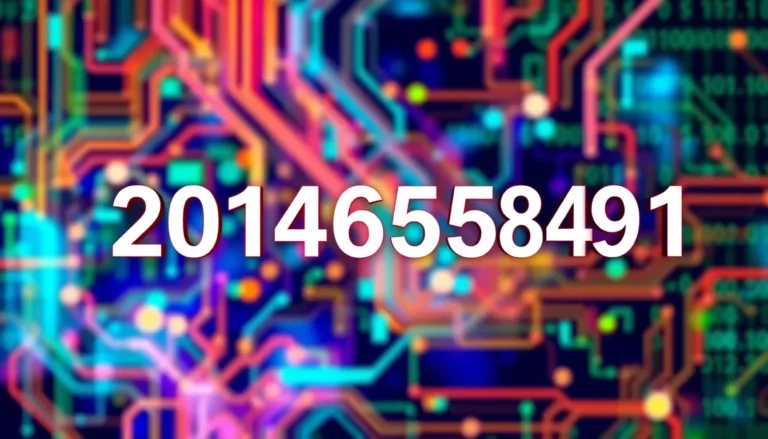In a world where your toaster might just be smarter than your average bear, IoT sensors are leading the charge in the tech revolution. These tiny gadgets are the unsung heroes of the Internet of Things, quietly collecting data and making our lives a whole lot easier—like a personal assistant that never takes a coffee break.
Table of Contents
ToggleOverview of IoT Sensors
IoT sensors play a crucial role in modern technology. These devices gather data from the environment, making it possible to monitor and automate various processes. Smart homes use IoT sensors for tasks like controlling lighting and temperature, enhancing energy efficiency and comfort.
Many industries benefit from IoT sensors. In agriculture, sensors monitor soil moisture and temperature, enabling farmers to optimize irrigation and crop yields. Manufacturing utilizes sensors to detect equipment malfunctions, reducing downtime and maintenance costs.
Functionality varies among IoT sensors. Environmental sensors track air quality, providing data to combat pollution. Wearable health monitors collect biometric data, aiding individuals in managing their health effectively. By connecting to the internet, these sensors transmit real-time information for analysis and decision-making.
Data security poses challenges with IoT sensors. As devices collect sensitive information, ensuring secure transmission and storage is vital. Regulatory standards increasingly address these concerns, guiding manufacturers in developing secure products.
Future advancements in IoT sensors hold promise. Innovations may enhance sensor accuracy and extend battery life, further integrating these devices into everyday life. As technology evolves, IoT sensors will continue to revolutionize industries, streamline operations, and improve user experiences.
Types of IoT Sensors

Different types of IoT sensors play crucial roles in data collection and automation processes across various industries. Below are specific categories of IoT sensors that highlight their unique functionalities.
Environmental Sensors
Environmental sensors monitor various atmospheric conditions, offering insights into air quality, temperature, humidity, and more. Applications range from smart home systems that control climate settings to agriculture where they optimize irrigation levels and crop health. By tracking these variables, environmental sensors contribute to resource efficiency and enhanced comfort. Data gathered by these sensors informs decisions related to environmental management and public health, promoting better living standards.
Motion Sensors
Motion sensors detect movement within an area, capturing data on presence and activity levels. They play significant roles in security systems, triggering alarms or sending alerts when unauthorized movement occurs. Smart lighting systems benefit from these sensors by automatically turning lights on or off based on occupancy. Many businesses employ motion sensors for energy management, ensuring that energy consumption aligns with actual usage patterns. Implementing motion sensors boosts awareness and responsiveness in various applications.
Optical Sensors
Optical sensors perceive light levels and wavelengths, offering insights relevant to applications such as imaging, distance measurement, and material identification. In smart homes, optical sensors adjust lighting according to ambient light conditions, improving energy efficiency. Various industries utilize these sensors in quality control processes, ensuring product consistency and safety. With the capability to perform diverse functions, optical sensors enhance automation and data accuracy across different environments. Their implementation supports innovative solutions in both consumer products and industrial settings.
Applications of IoT Sensors
IoT sensors play a vital role across various sectors by improving efficiency and enabling automation.
Smart Homes
Smart homes utilize IoT sensors to enhance daily living. These sensors control lighting and temperature, creating a customizable environment. For example, smart thermostats learn user preferences, adjusting energy consumption accordingly. Motion sensors activate lights when someone enters a room, providing convenience and security. Furthermore, door sensors alert homeowners to any unauthorized access. By integrating these devices, households experience greater energy savings and improved comfort.
Industrial Automation
IoT sensors transform industrial automation significantly. Sensors monitor machinery performance and predict maintenance needs, reducing downtime. For instance, vibration sensors detect unusual patterns, signaling potential failures before they occur. Temperature and humidity sensors help maintain optimal conditions for manufacturing processes, ensuring quality products. Additionally, these sensors provide real-time data that enhances decision-making and streamlines operations. As a result, industries see increased productivity and cost savings.
Healthcare Monitoring
Healthcare monitoring benefits greatly from IoT sensors, enhancing patient care. Wearable devices collect biometric data, allowing for continuous health tracking. For example, heart rate monitors and glucose sensors provide real-time insights, enabling timely interventions. Furthermore, remote monitoring systems alert healthcare providers to critical changes in patient conditions. This technology not only improves patient outcomes but also reduces hospital visits and treatment costs. Ultimately, IoT sensors revolutionize how healthcare is delivered and managed.
Benefits of Using IoT Sensors
IoT sensors offer numerous advantages across various sectors. Increased efficiency stems from their ability to automate tasks, reducing the need for human intervention. Enhanced data collection allows for real-time monitoring of environmental factors, leading to timely decision-making.
Smart homes benefit significantly from IoT sensors. Homeowners experience improved energy conservation through automated lighting and heating systems. Enhanced security features, like motion detectors and surveillance cameras, provide peace of mind while streamlining daily living.
In the agricultural sector, IoT sensors optimize resource management. Farmers monitor soil moisture levels and crop health, leading to improved yield and reduced water usage. Automated irrigation systems adjust water supply based on real-time conditions, supporting sustainable practices.
Manufacturing sectors leverage IoT sensors for predictive maintenance. Equipment monitoring minimizes downtime by alerting personnel before breakdowns occur. Enhanced productivity leads to cost savings and operational efficiency.
Healthcare applications illustrate another crucial benefit. Wearable devices collect biometric data, enabling continuous health monitoring. Patients receive timely alerts for abnormal health conditions, resulting in proactive healthcare management.
Data-driven insights emerge as a significant advantage of IoT sensors. Industries analyze collected data to identify trends and make informed decisions. This capability supports competitive advantage and strategic planning.
Cost savings frequently arise from deploying IoT sensors. Businesses experience reduced operational costs through optimized processes and improved asset utilization. Resource efficiency translates into direct financial benefits over time.
The integration of IoT sensors in various sectors transforms operations. The advantages of efficiency, security, and data insights elevate the performance of industries and enhance everyday experiences.
Challenges in IoT Sensor Deployment
IoT sensor deployment presents notable challenges that impact effectiveness. Data security ranks high among these concerns. Securing sensitive information during transmission and storage requires robust protocols. Without appropriate measures, vulnerabilities can expose systems to breaches.
Connectivity issues also pose a significant obstacle. Sensors rely on stable internet access for real-time data sharing. In areas with weak signals, functionality suffers, limiting the value of collected data. Similarly, varying standards and protocols in different regions can complicate integration.
Scalability becomes a challenge as the number of sensors increases. Managing numerous devices requires efficient systems for monitoring and maintenance. As device networks grow, the complexity of data management escalates, potentially leading to inefficiencies.
Power consumption affects deployment viability. Many IoT sensors rely on battery power, necessitating frequent replacements or recharges. Implementing solutions like energy harvesting can mitigate this, but they introduce additional considerations.
Interoperability among devices presents a further challenge. Ensuring that diverse sensors communicate effectively with existing systems fosters seamless integration. Without compatibility, the potential benefits of IoT sensors diminish.
Lastly, regulatory compliance adds complexity. Adhering to evolving standards requires ongoing adjustments to deployment strategies. Organizations must stay informed about regulations governing data use and privacy to avoid penalties.
Addressing these challenges is essential for optimizing IoT sensor deployment. Improved security measures, advanced connectivity solutions, and adherence to regulations enable more successful integration into daily operations.
The impact of IoT sensors on modern life is undeniable. These devices not only enhance convenience and efficiency but also pave the way for smarter living and working environments. As industries continue to adopt IoT technology the potential for innovation and improvement grows exponentially.
With ongoing advancements in sensor technology the future looks promising. Enhanced accuracy and battery life will likely lead to even more widespread integration into daily activities. By addressing current challenges such as data security and interoperability organizations can unlock the full potential of IoT sensors.
Ultimately IoT sensors are set to transform operations across various sectors. Their ability to provide real-time data and automate processes will continue to elevate performance and enrich user experiences.



